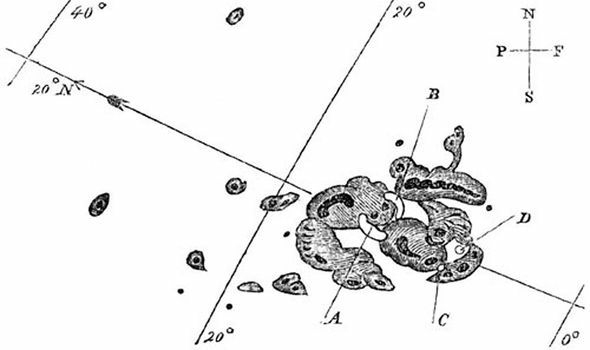Volatile Space Weather
Stellar flares are sudden flashes of magnetic imagery emitted by stars. Damaged satellites and disrupted radio communications are sometimes what happens due to the sun’s flares of our solar system. But elsewhere, robust stellar flares have the ability to deplete and even destroy atmospheric gases like ozone.
Pic- google
Extreme space weather has had a big impact, on rare occasions, such as the famous Carrington Event (a solar superstorm) in 1859, officially known as SOL1859-09-01. A few months before the solar maximum of 1860, Richard Carrington observed several sunspots on the surface of the sun on 28th August 1859, and on 1st September 1859, produced detailed drawings of them as they appeared.
Nine-hour blackouts suffered in the Canadian province of Quebec in 1989, and many other such events have seen polar flights being re-routed, or the explosion of sea mines during the Vietnam War.
According to a new study conducted by Northwestern University, in the long term, atmospheric chemistry is very different. In the words of the study’s first author, Howard Chen, “Continuous flares actually drive a planet’s atmospheric composition into a new chemical equilibrium”. Daniel Horton, the study’s senior author, added, “We’ve found that stellar flares might not preclude the existence of life, in some cases, flaring doesn’t erode all of the atmospheric ozone. Surface life might still have a fighting chance”.
Chen further said, “Space weather events are typically viewed as a detriment to habitability. But our study quantitatively shows that some space weather can actually help us detect signatures of important gases that might signify biological processes”.
Researchers from a wide range of backgrounds and expertise, including astronomers, exoplanet scientists, climate scientists, theorists, and observers were a part of this study, featured in the journal Nature Astronomy on Dec 21.
A joint effort among researchers at Massachusetts Institute of Technology, University of Chicago, NASA Nexus for Exoplanet System Science (NExSS), and the Northwestern University of Colorado at Boulder.
Chen is a Ph.D. candidate in Horton's Climate Change Research Group and a NASA future investigator. Horton is an assistant professor of Earth and planetary sciences at Northwestern's Weinberg College of Arts and Sciences.
Our sun’s flares, fortunately for us, have typically a minimal impact on the planet. Most habitable exoplanets aren’t as lucky, unfortunately. An optimal distance (close enough that water won’t freeze, but not so close that water vaporizes) is required between a planet and a star, for that planet to harbor life.
Allison Youngblood, the co-author of the study and an astronomer at the University of Colorado, said, “Our sun is more of a gentle giant. It’s older and not as active as younger and smaller stars. Earth also has a strong magnetic field, which deflects the sun’s damaging winds”.
Horton further added, “We studied planets orbiting within the habitable zones of M and K dwarf stars -- the most common stars in the universe, habitable zones around these stars are narrower because the stars are smaller and less powerful than stars like our sun. On the flip side, M and K dwarf stars are thought to have more frequent flaring activity than our sun, and their tidally locked planets are unlikely to have magnetic fields helping deflect their stellar winds."
Eric T. Wolf, a planetary scientist at CU Boulder and a co-author of the study, said, "This project was a result of a fantastic collective team effort, our work highlights the benefits of interdisciplinary efforts when investigating conditions on extrasolar planets."
Journal Reference:
Howard Chen, Zhuchang Zhan, Allison Youngblood, Eric T. Wolf, Adina D. Feinstein, Daniel E. Horton. Persistence of flare-driven atmospheric chemistry on rocky habitable zone worlds. Nature Astronomy, 2020; DOI: 10.1038/s41550-020-01264-1
Article by- Shivam Taneja








Comments
Post a Comment